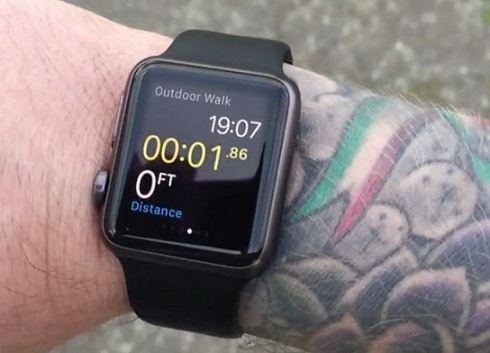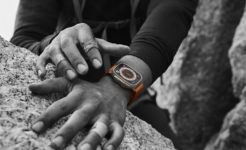
Apple Watch Doesn’t “Like” Tattoos
Apple Watch is a brilliant timepiece, but not without its quirks. For example, the Reddit user guinne55fan, noticed that his watch was acting up, and figured out that apparently his Apple Watch didn’t like his wrist. About 2 years ago, he stated that his Apple Watch kept on locking up every time the screen went dark and prompted for a password to reawaken.
He first thought that perhaps it was losing contact with his skin, but noticed even after attempting to correct it, the watch still didn’t work correctly. Then, as an experiment, the man changed wrists and voila, it worked! Why you may ask? It turns out that the Apple Watch has a hard time telling that it’s on a wrist, when there is also a tattoo on the skin underneath it..

Apple Wath and tattoo
His post on Reddit earned a great amount of feedback and following on his social media. Many tattooed people wrote that they too faced the same problem, and no one could figure out how to solve it.
The watch wrist sensors, which determine the passcode and many other features, including Apple Pay, are very sensitive to the pigmentation of human skin. It has something called photoplethysmography technology, which is implemented into the device.
Don’t let the name scare you, all it means is basically that the watch uses rays of green light that projects onto the skin and reads how much light reflects back. The human skin absorbs some amount of this green light (depending on the condition of the skin and blood vessels) condition. This same technology is used in heart rate monitors and such, but in the Apple Watch, it also triggers the locking mechanism. Having glitches of this magnitude can ruin the very idea of the smart watch altogether.
The early guess was that the tattoo ink has some metal in it and it prevents the sensors from working, much like the way metal prevents an MRI machine from scanning. But, metal inks aren’t used in legal tattoo shops around USA and Europe. In fact, you would think the metallized tattoos would damage the MRI equipment, or at least cause an unpleasant sensation for people who have them because the metal particles got heated in the strong magnetic field the MRI emits.
The problem is actually because the ink that gets under the skin somehow changes its reflective properties. Ink can’t be compared with a natural pigment, no matter how dark your skin is. Instead, the sensor ‘sees’ the inked area as nothing. The discolored skin reflects too little for the sensor to catch the reflected light. The figures are just below the sensitive level. Some heavily sleeved users reported that their Apple Watches didn’t detect their wrists at all. And even those who sport small tattoos report that the sensors can glitch now and then.
Unfortunately, there’s no way to technically solve the problem. The photoplethysmography developers didn’t take into account the tattoo lovers. How very intolerable of them!
The bad news, is that any skin discoloration or damage can make the Apple Watch glitch, including vitiligo spots and scars. The only way to make the Apple Watch work is to turn off the wrist detection function.
Open the Apple Watch app and browse to My Watch -> General -> Wrist Detection. Toggle the knob towards the Off position and confirm your selection by tapping Turn Off. The device then warns you that some functions will be unavailable, including the Wrist Rise function which allows you get the latest alerts simply by raising your hand.






Facebook
Twitter
RSS